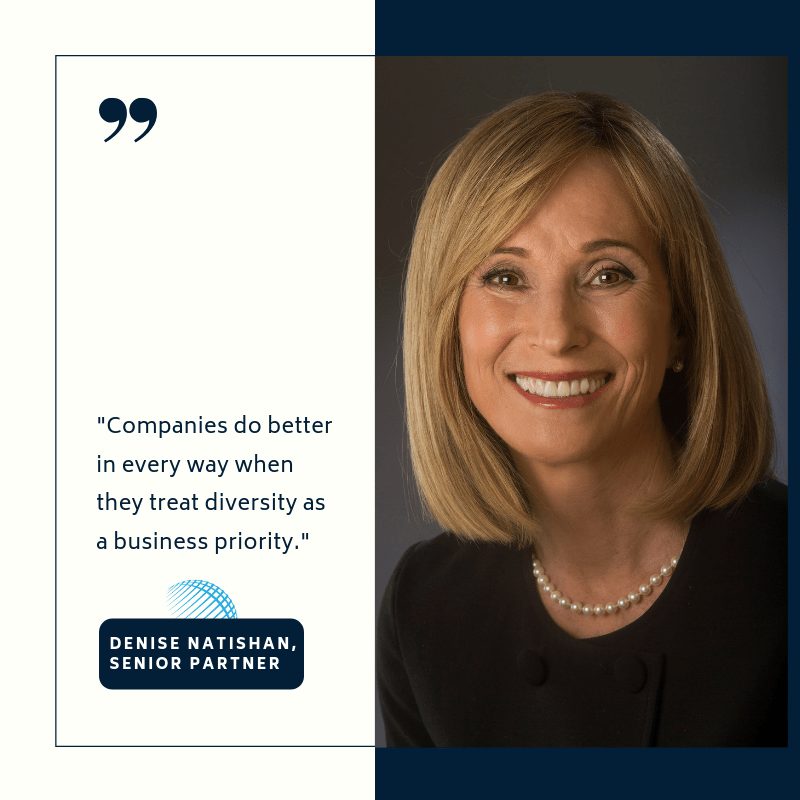Blog
Making a Difference: Treating Diversity as a Business Priority

The problem with unconscious biases is that they are unconscious.
They’re tough to see, hard to talk about, and can take a long time to change. As Beth Pittman and I discussed at the Stanford Graduate School of Business Me2We Conference, pushing against them in the workplace can be encouragingly straightforward and a proven way to improve both company culture and profits.
Attracting, retaining, and inspiring women in the workplace has been challenging for many companies. Why? History holds many answers. It wasn’t until the 1970’s that women in the United States could apply for a credit card, get an Ivy League education, and report sexual harassment. And it wasn’t until 1978 that the Pregnancy Act made it illegal for employers to pass over otherwise qualified female applicants based on the assumption they might become pregnant.
While positive changes continue, there are still gaps in how women are being represented at the board, executive, and middle management levels.
Things to consider: Women make up 47% of the workforce; women are responsible for 70%-80% of all purchasing decisions; men hold 62% of all management positions vs. 38% for women, and; men are roughly 95% of all CEOs at S&P 500 companies.
Unless something changes, it will take more than 100 years for men and women to be represented equally in C-Suite roles.
MAKING A DIFFERENCE
One way everyone can be proactive about inclusion is to realize that this is not an issue only affecting women: it affects the bottom line everywhere. More women in the workplace means lower levels of employee turnover, increased job satisfaction and knowledge sharing, and a reduction in occurrences of all workplace harassment.
Businesses are also 158% more likely to understand their target consumers when there is at least one member on your team who represents your customers’ genders, races, ages, sexual orientation or cultures.
So what can be done to make the workplace inclusive for everyone? First, remember that everyone can make a difference. Unconscious biases, by definition, aren’t intentional. But it’s important to recognize they do form the foundation of conscious biases that have prevented women from advancing in their careers.
One way to disarm potential awkwardness around changing these ingrained perceptions is to simply start talking about them. Creating participatory “lunch and learn” sessions that encourage respectful discussion of difficult topics can be a great start to help everyone feel safe and heard.
In line with that, men can step up by mentoring and sponsoring women for leadership positions. Women can step up by making sure they always have something to say in a meeting and stop being the note-taker.
The bottom line is companies do better in every way when they treat diversity as a business priority.
Practical steps towards diversity include developing gender-neutral hiring practices; bringing in more female/diverse leaders in executive and C-Suite positions; offering flexible work hours, and perhaps most importantly for long-term success, developing and implementing plans for retention of top talent.
What kind of things are you or your company doing to create an inclusive work environment? Please let me know about creative ways you are stepping up to make a diversity difference.
By Denise Natishan, Senior Partner
Like what you're reading?
Subscribe to the blog for insightful posts delivered via email. We respect your privacy and won’t spam your inbox.
